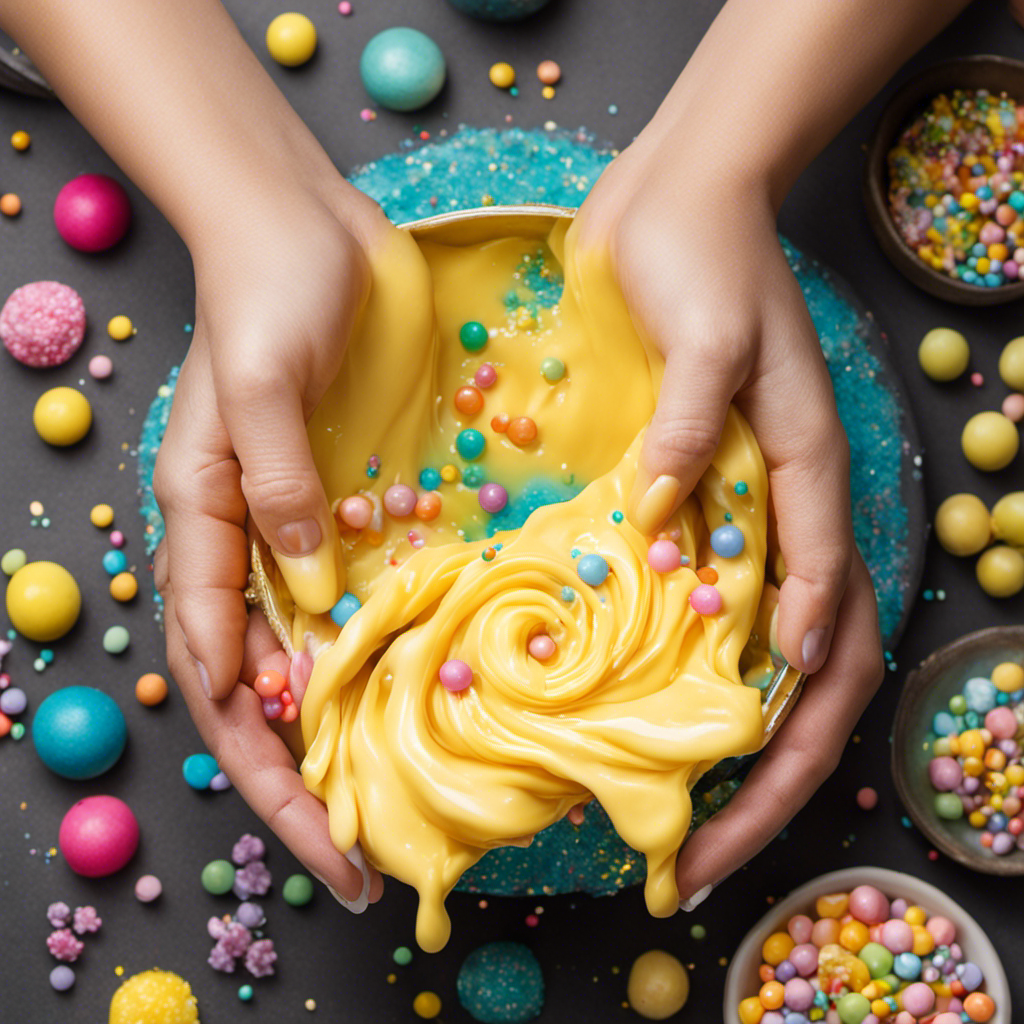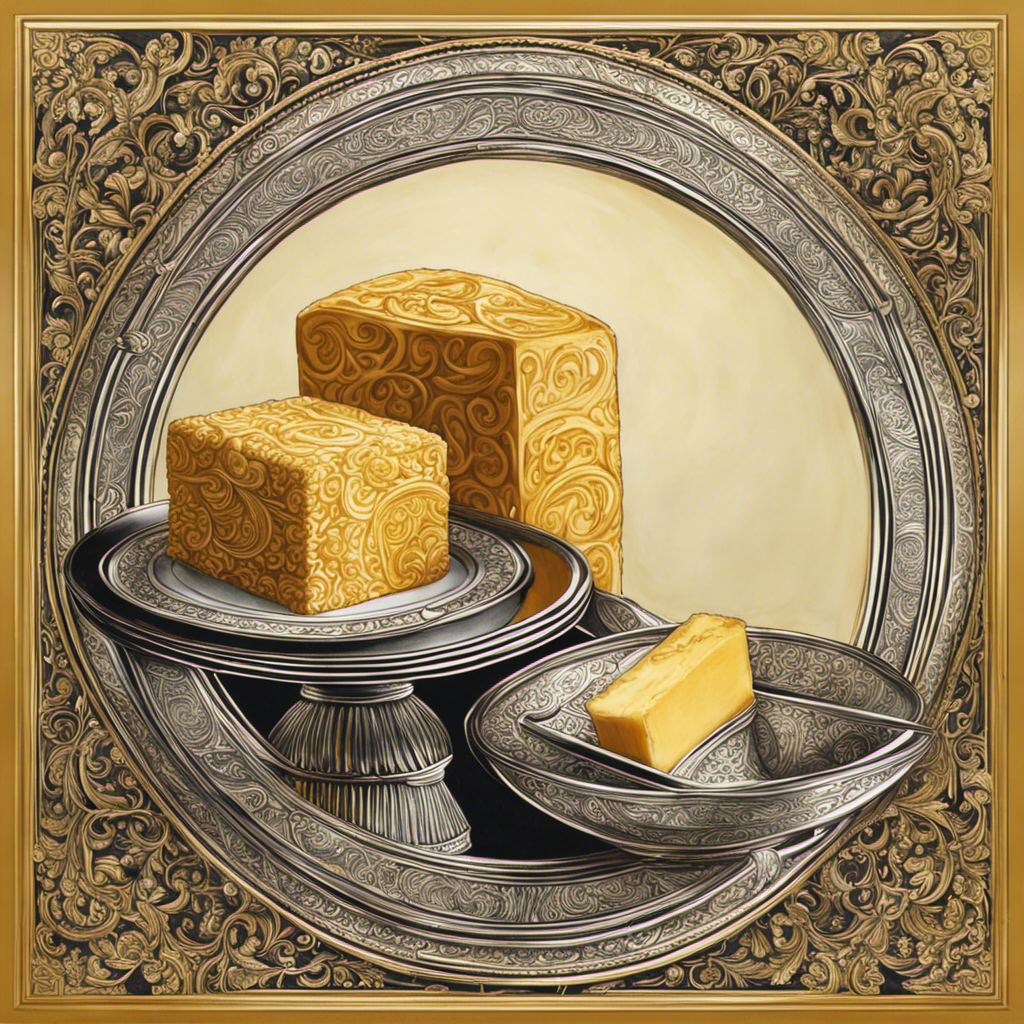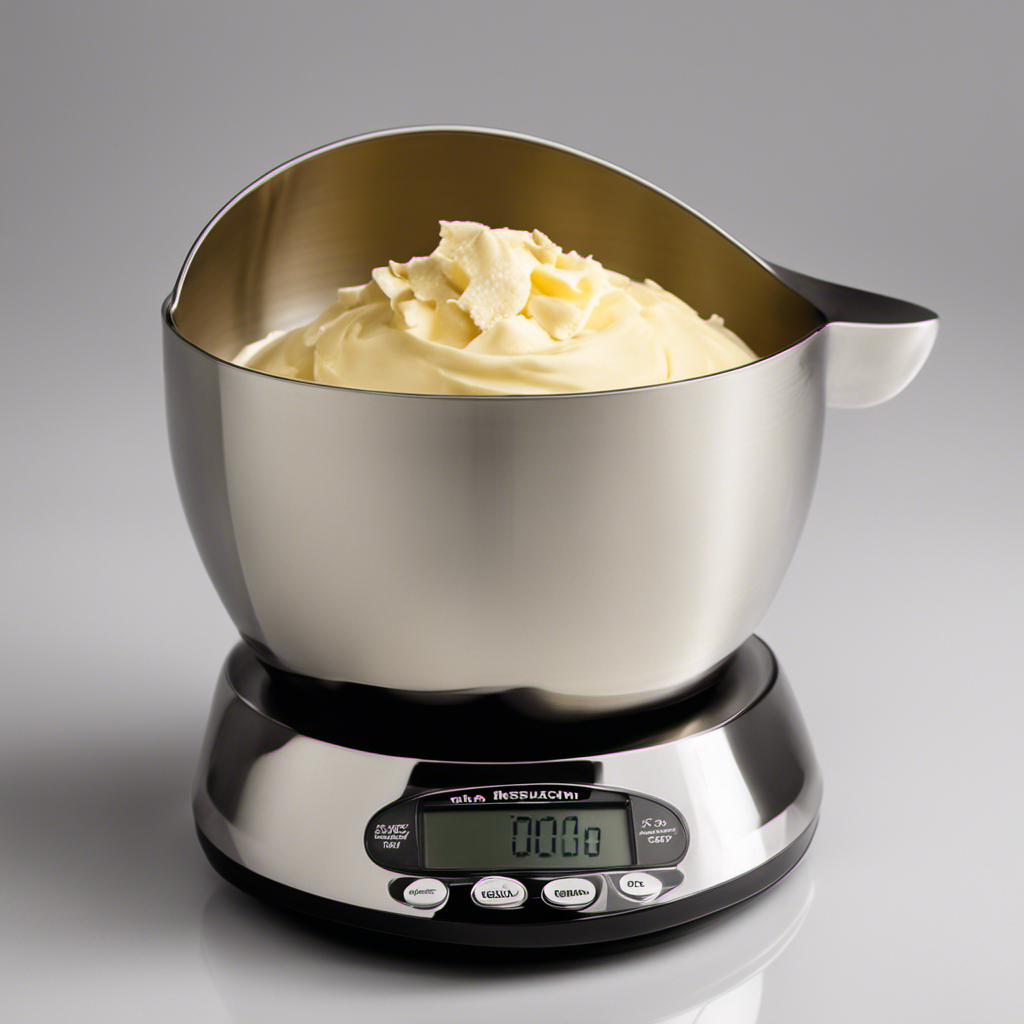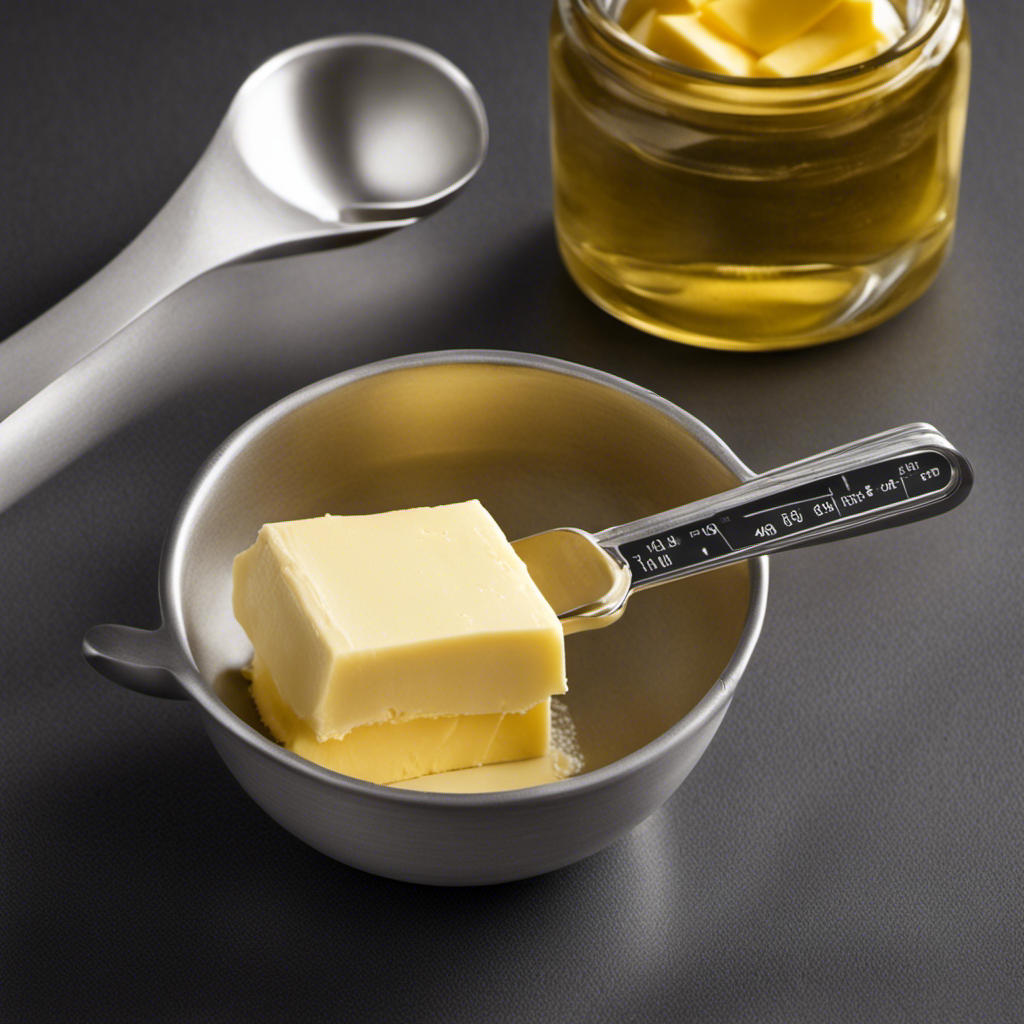As someone who is passionate about slime, I’ve encountered more than a few challenging moments. However, the moment my butter slime ceased to maintain its stretchy texture and smoothness, I realized it was crucial to seek out a solution.
In this article, I’ll guide you through the process of fixing butter slime, step by step. Whether your slime is too hard or too watery, I’ve got you covered.
So let’s roll up our sleeves and dive into the world of butter slime troubleshooting.
Key Takeaways
- Adding more cornstarch or clay can help absorb excess moisture and reduce stickiness in butter slime.
- Incorporating lotion or oil gradually can soften hard butter slime and improve its consistency.
- Sprinkling cornstarch or kneading vigorously can thicken watery butter slime and restore its texture.
- Kneading the slime well and experimenting with different ingredients and techniques are crucial for fixing and enhancing butter slime.
Common Issues With Butter Slime
One common issue with butter slime is that it can become too sticky and difficult to handle. When this happens, there are several troubleshooting tips you can try to fix the problem.
First, you can add more cornstarch to the slime mixture. This will help absorb the excess moisture and make the slime less sticky.
Another option is to add lotion or baby oil to the slime. These substances can help moisturize the slime and make it more pliable.
If these solutions don’t work, you can also try alternative butter slime recipes that use different ingredients, such as clay or foam beads. These ingredients can help improve the texture and reduce stickiness.
By trying these troubleshooting tips and experimenting with alternative recipes, you can easily fix the issue of sticky butter slime and create a more enjoyable slime experience.
In order to identify the cause of sticky butter slime, it is important to understand the ingredients and the mixing process.
Identifying the Cause of Sticky Butter Slime
To identify what’s causing your sticky slime, you can try adding a little bit more activator and kneading it until it becomes less sticky.
Sticky butter slime can be caused by a few factors. One possible reason is that you may not have added enough activator during the slime-making process. Activator, such as borax solution or contact lens solution, helps to bind the ingredients together and create the desired texture. If you didn’t add enough activator, the slime may remain sticky.
Another reason could be that you used too much oil or lotion in your butter slime recipe. These ingredients can make the slime greasy and sticky. To fix this issue, you can try adding a bit more cornstarch or clay to absorb the excess oil.
Remember to knead the slime well after making any adjustments to ensure a smooth and non-sticky consistency.
Step-by-Step Guide to Fixing Hard Butter Slime
If your butter slime has become hard, you can try adding a small amount of lotion or oil to soften it. Troubleshooting techniques like this can help you fix your butter slime and make it enjoyable to play with again.
When your butter slime is hard, it can be difficult to stretch and mold. By incorporating a small amount of lotion or oil, you can restore its softness and pliability. Simply add a teaspoon of lotion or oil at a time and knead it into the slime until you achieve the desired consistency.
If you don’t have lotion or oil on hand, you can also try adding a few drops of water. Alternatively, you can explore alternative butter slime recipes that use different ingredients to create a softer and more malleable slime.
Effective Solutions for Watery Butter Slime
Adding lotion or oil can help restore the desired consistency of watery butter slime. If your butter slime is too watery and doesn’t hold its shape, here are some effective solutions to fix it:
-
Adding cornstarch: Start by sprinkling a small amount of cornstarch onto the watery slime. Then, knead it thoroughly until the slime thickens to the desired consistency. Add more cornstarch if needed, but be careful not to add too much, as it can make the slime too stiff.
-
Using lotion: Squeeze a small amount of lotion onto the watery slime and mix it in. The lotion helps bind the ingredients together and improve the texture of the slime. Gradually add more lotion until the slime becomes less watery and more elastic.
-
Experiment with oils: Some oils, like baby oil or mineral oil, can also help thicken butter slime. Add a few drops at a time and mix it in until the desired consistency is achieved.
Restoring the Stretchiness of Butter Slime
You can easily restore the stretchiness of your butter slime by kneading it thoroughly and gradually adding small amounts of lotion or oil.
Enhancing the texture of butter slime is a common concern for slime enthusiasts. Over time, the slime may lose its original elasticity and become stiff or less malleable.
To address this issue, begin by kneading the slime vigorously. This helps to break up any clumps and distribute the moisture evenly.
Next, add a small amount of lotion or oil to the slime. These substances help to moisturize and soften the slime, making it more pliable. Be cautious not to add too much, as this can make the slime too sticky.
Preventing Future Problems With Butter Slime
Now that we’ve restored the stretchiness of our butter slime, it’s important to take steps to prevent future problems with it. Here are some tips to keep your butter slime in its best condition:
-
Store it properly: After playing with your butter slime, make sure to store it in an airtight container. This will prevent it from drying out and losing its texture.
-
Avoid exposure to moisture: Butter slime is sensitive to moisture, which can cause it to become sticky or even develop mold. Keep your butter slime away from water or any other liquids.
-
Clean your hands before playing: Oils, lotions, and dirt on your hands can affect the texture of your butter slime. Make sure to wash your hands thoroughly before playing with it to maintain its smooth and stretchy consistency.
Frequently Asked Questions
Can I Use Regular Glue Instead of Clear Glue for Making Butter Slime?
Yes, regular glue can be used as a substitute for clear glue when making butter slime. However, it may affect the transparency of the slime. If transparency is important, troubleshooting tips can help achieve the desired consistency.
How Long Does It Take for Butter Slime to Harden?
I discovered that butter slime takes longer to harden than regular slime. However, I have found some techniques to speed up the hardening process. Let me share them with you!
Can I Use Lotion to Make My Butter Slime Less Sticky?
Yes, lotion can be used to make butter slime less sticky. It acts as a moisturizer and helps to soften the slime. However, there are also alternative ingredients, such as baby oil or cornstarch, that can achieve the same result.
How Can I Remove Food Coloring Stains From My Hands After Playing With Butter Slime?
To remove food coloring stains from my hands after playing with butter slime, I recommend using a mixture of dish soap and warm water. Rub the solution onto the stained areas, then rinse thoroughly.
Can I Store Butter Slime in the Refrigerator to Prevent It From Drying Out?
Yes, you can store butter slime in the refrigerator to prevent it from drying out. It helps to maintain the slime’s moisture and extend its shelf life. Just make sure to seal it properly in an airtight container.
Conclusion
In conclusion, fixing butter slime requires patience, precision, and the right techniques.
By identifying the cause of sticky or watery slime, you can effectively restore its texture and stretchiness.
Remember to follow the step-by-step guide and use the appropriate solutions for each issue.
Preventing future problems with butter slime is key to maintaining its quality and ensuring hours of fun.
So, stay savvy, solve the slime struggles, and savor the satisfaction of successful slime fixing!










